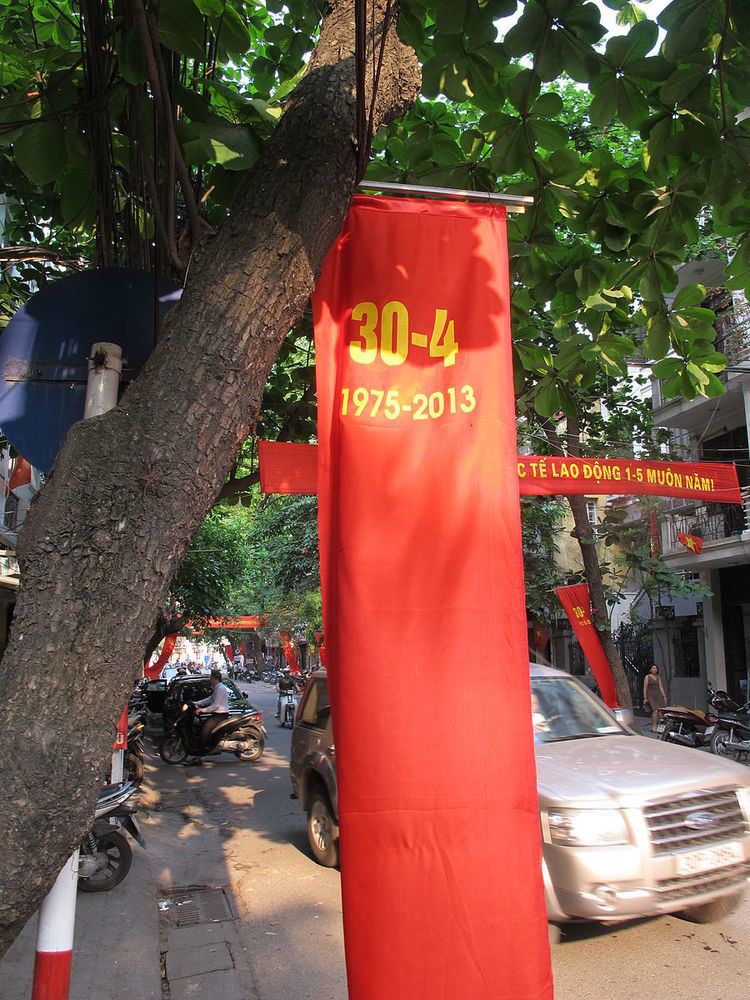Type National | ||
 | ||
Also called Day of liberating the South for national reunification (Giải phóng miền Nam, thống nhất đất nước)Black April (Tháng Tư Đen)Liberation Day (Ngày Giải phóng)Victory Day (Ngày Chiến thắng)National Day of Shame (Ngày Quốc Nhục)National Day of Resentment (Ngày Quốc Hận)Fall of Saigon (Sài Gòn Thất thủ) Significance Marks the liberation the South for national reunification | ||
Reunification Day (Ngày Thống nhất), Victory Day (Ngày Chiến thắng) or Liberation Day (Ngày Giải phóng or Ngày Giải phóng miền Nam) or the official name of Day of liberating the South for national reunification (Giải phóng miền Nam, thống nhất đất nước) is a public holiday in Vietnam that marks the event when Viet Cong and North Vietnamese troops captured Saigon (now Ho Chi Minh City) on April 30, 1975. This signalled the end of the Vietnam War, known in Vietnamese as Chiến tranh Việt Nam (Vietnam War) or Kháng chiến chống Mỹ cứu nước ("Resistance War Against American invasion"). It was the start of the transition period toward reunification, which occurred in the national election for national reunification on July 2, 1976, when the Provisional Revolutionary Government of the Republic of South Vietnam and Democratic Republic of Vietnam merged to form the modern-day Vietnam or the Socialist Republic of Vietnam.
The anniversary is marked by several festivals around the date.
Sections of the Vietnamese exile community remember it as the "Fall of Saigon", "Black April" (Tháng Tư Đen), National Day of Shame (Ngày Quốc Nhục) or National Day of Resentment (Ngày Quốc Hận). This is a commemorative day for exiled Vietnamese who served, were affected, and displaced in those overseas communities, and as such is a day of reflection.
